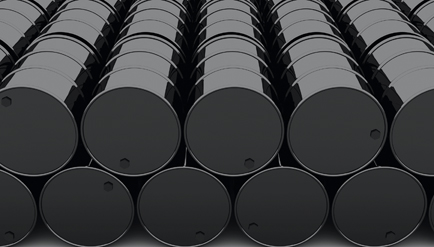North Sea companies are facing hard times as oil prices fall. But a drive to introduce new technology could revive the sector’s fortunes

Depressed oil prices have hit the North Sea industry hard, with dozens of projects shelved and hundreds of jobs slashed. The impact in the region is particularly marked, because the North Sea is a mature basin with higher operating costs than many other parts of the world. So margins are razor thin, and the industry is in a state of paralysis as it second guesses the length of time that barrel prices will remain low.
Royal Dutch Shell, Britain’s largest oil company, was one of the first majors to announce job cuts and adjust shifts in the North Sea in a bid to counter the impact of falling oil prices on its operations in Aberdeen. In March, the company said it would reduce the number of staff and agency contractors it employs in the sector by 250 in 2015 in a bid to cut costs. Other firms have since followed suit, and more bad news is expected.
Projects cancelled
The other significant impact has been the speeding up in the rate of production abandonment at some of the more mature oilfields in the North Sea. These older resources have been maintained during prolonged periods of high prices, but in the current economic environment they have quickly become loss-making. Fairfield’s Dunlin cluster in the northern North Sea, for instance, was shut down in June. Fairfield, who acquired the cluster in 2008, said the asset had met “maximum economic recovery”.
The severity of the situation was laid bare in a recent report published by Aberdeen and Grampian Chamber of Commerce, which suggested that as many as two-thirds of North Sea oil and gas industry operators have been forced to cancel projects because of the recent fall in oil prices. The findings, from its 22nd Oil and Gas Survey, also state that half of operators have been forced to reduce staff training for the same reason.
Furthermore, the fall in the oil price has been a contributory factor in lower confidence and activity levels in the sector. Contractors’ confidence is at its lowest point since the survey began in 2004. Only 7% of contractors are more confident about their North Sea activities than they were a year ago, compared to 76% who are less confident. The percentage of firms that report working at or above optimum levels in the North Sea has also fallen to its lowest level since the survey began.
Exploration, specifically, has been a big casualty of the challenges facing the oil and gas industry, with 70% of all firms involved in exploration having seen the value of it fall in the past 12 months, and just 8% of them expecting the value of exploration to increase in 2015.
Tax revenues hit
The decline in activity in the North Sea doesn’t just have oil and gas companies quaking in their boots. It is a worry for the Chancellor George Osborne too, who can expect tax receipts from the sector to fall sharply. A fiscal sustainability report, issued by the Office for Budget Responsibility, suggests that all its prediction scenarios show a long-term decline in this revenue stream as a result of the gradual exhaustion of the natural resources remaining within the UK Continental Shelf. Even an assumption of higher production and oil prices reaching around $210 a barrel would leave revenues as a share of GDP at a fraction of those seen in the past 10 years, says the report. Ultimately the sector is in decline, and that means a reduction in tax revenues for the government over the coming years.
The supply chain is feeling the pinch, too. The North Sea supports hundreds of small firms that provide a range of services, from the design of complex components and systems through to the provision of helicopters to ferry workers to far-off structures.

Effect on supply chain
42 Technology, a Cambridgeshire-based product and technology developer employing 40 scientists and engineers, is typical of the sorts of companies that have been hit hard by the drying up of new offshore contracts. Jeremy Carey, its managing director, admits that the sector is retrenching across the board, and that the supply chain is being hit hard. “Oil and gas was a fairly important sector to us last year but, with the oil price falling, many of the majors have put a lot of work on hold while they figure out what’s going on,” he says.
“That is natural when companies’ revenues drop. They put a lot of non-critical activities on hold, and research is seen as important, but not urgent. So they have reined in all those budgets to start with. They will open up again gradually, once they know how low and for how long the price falls are going to be.”
High cost overheads
The problem is the age of the North Sea region, he adds. “The average round-the-world cost of producing oil is probably below $10. In the North Sea it can be $40 to $50. It’s an expensive, mature basin with high-cost labour, a lot of helicopters, and very tight safety standards. So it will be hit harder than most of the rest of the major regions.”
Push for innovation
This is making life difficult for 42 Technology, but it isn’t necessarily the end of the world. Carey makes a slightly more upbeat assessment of the impact of falling oil prices in the oil and gas sector, arguing that lower prices could, in the long term, actually lead to greater innovation. He believes that, if low prices become the ‘new normal’, a re-focusing on extending end-of-life assets or improving operating efficiency will occur.
“There are different levels of life extension that can be achieved in the North Sea,” he says. “At the expensive end is water or CO2 re-injection. But that’s fiendishly expensive. At the other end of the spectrum, if you can take a little bit of the cost out of an existing field – perhaps by automating some maintenance – then there are probably money-saving projects out there that never made it to the top of the tree as they weren’t as valuable as exploring a new field. But now these fields are marginal – some effort could take an asset from loss-making to break-even or small profit.”
Specific technology adoption might include the increased use of sensors, instrumentation and data communications for tasks that previously would have relied solely on manual inspection. This is already happening in the sector, but it’s a trend
with a long way to go as sensors and data costs fall. More localised processing with sensors to reduce the volume of data that needs to be transmitted could also be employed, Carey suggests.
Other promising technology that could be increasingly considered includes active monitoring and control of pressure/temperature bottlenecks; increased use of algorithms to infer details of condition/operating history from sparse data sets; and increased
use of robotic inspection, including unmanned aerial vehicles (UAVs).
Inspection by drones
“Robotic inspection of oil and gas facilities is an interesting area,” says Carey. “UAVs are probably not ready for offshore use yet but I don’t see why they wouldn’t be in the near future. The obvious challenges are range and weather.
“The first application of UAVs I came across when I worked in the electricity sector was monitoring power lines up in Scotland to check trees hadn’t blown down. Originally we were flying helicopters, but these drones could do it for a fraction of the cost. That’s something that the offshore industry is likely to consider.”
Energy harvesting to improve battery life on offshore infrastructure is another area where Carey believes costs could be saved. He says: “I was recently approached by a Cambridge University spin-out that had developed an energy harvesting technology that works well from energy harvesting from vibrating source. There’s plenty of vibration on oil and gas with rotating machinery everywhere.
“If you can run your sensor off scavenged energy that massively reduces the frequency with which you have to visit those facilities to change batteries. If you can extend that battery life from, say, 18 months to five years, it would save you a lot of helicopter flights.”
So, while depressed oil prices are hitting the bottom lines of firms in the supply chain, they could engender a period of renewed innovation, and the introduction of new technology and more efficient ways of working. That’s a small silver lining in an otherwise stormy sky.

Industry hit by project deferrals
It’s not just North Sea operators that are feeling the pinch from depressed prices at the moment – oil and gas companies around the globe are deferring projects and cutting back staff.
The dramatic fall in prices in 2014 and subsequent dismantling of 2015 company budgets had, by mid-year, resulted in more than 45 major global project Final Investment Decision (FID) deferrals, according to research by energy specialist Wood Mackenzie.
As a result, it estimates that 20 billion barrels of oil equivalent (boe) of reserves have been pushed back from a diverse range of onshore, shallow-water and deepwater projects. Together, this creates a $200 billion hole in the industry’s investment pipeline.
“By year-end we may be able to count the number of major projects that reached a FID during 2015 on one hand,” says principal analyst Angus Rodger.
Projects that are technically challenging, have significant upfront costs and/or low returns have proved vulnerable – more than 50% of the 20 billion boe is located in deepwater projects, and 30% in the Canadian oil sands.
There are two main drivers for deferring projects: releasing capital and giving more time to develop enhanced designs. In essence, rebuilding projects for a lower-price environment.
Inflationary pressures have pushed many projects into economically marginal territory, and operators are reworking costs to achieve their hurdle rates, says Rodger. “But it won’t be easy. Half of new greenfield developments still produce sub-15% development initial rate of returns, which is below most companies’ economic hurdle rate.”
Wood Mackenzie says that companies that have deferred projects are now targeting start-up between 2019 and 2023. However, if firms continue to focus on cutting capital commitments – to the detriment of future production growth – then these dates will be pushed back further.